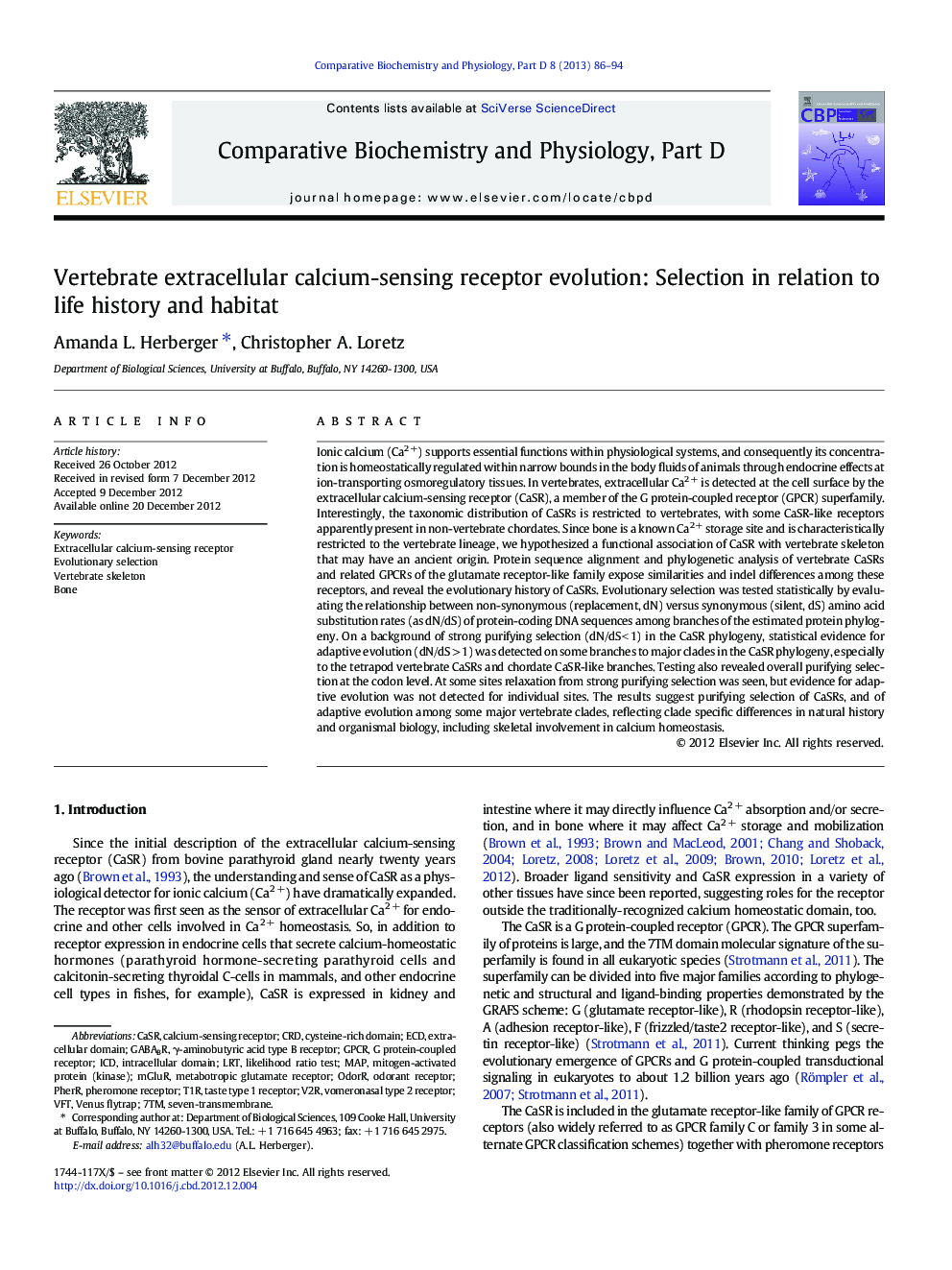| کد مقاله | کد نشریه | سال انتشار | مقاله انگلیسی | نسخه تمام متن |
|---|---|---|---|---|
| 1978702 | 1061617 | 2013 | 9 صفحه PDF | دانلود رایگان |
عنوان انگلیسی مقاله ISI
Vertebrate extracellular calcium-sensing receptor evolution: Selection in relation to life history and habitat
دانلود مقاله + سفارش ترجمه
دانلود مقاله ISI انگلیسی
رایگان برای ایرانیان
کلمات کلیدی
V2RLRTVFTCaSR7TMT1RmGluRGPCRCRDECDLikelihood ratio test - آزمون نسبت احتمالBone - استخوان extracellular domain - دامنه خارج سلولیintracellular domain - دامنه درون سلولیcysteine-rich domain - دامنه غنی از سیستینICD - دفیبریلاتورهای کاردیوورتر کاشتنیmap - نقشهseven-transmembrane - هفت ترامبنرVenus flytrap - پرواز ونوسGABABR - گابربOdorant receptor - گیرنده بویاییextracellular calcium-sensing receptor - گیرنده حساس خارج سلولی کلسیمCalcium-sensing receptor - گیرنده سنجش کلسیمPheromone receptor - گیرنده فرومونMetabotropic glutamate receptor - گیرنده گلوتامات متابوتروپیکG protein-coupled receptor - گیرندههای جفتشونده با پروتئین جی
موضوعات مرتبط
علوم زیستی و بیوفناوری
بیوشیمی، ژنتیک و زیست شناسی مولکولی
زیست شیمی
پیش نمایش صفحه اول مقاله

چکیده انگلیسی
Ionic calcium (Ca2Â +) supports essential functions within physiological systems, and consequently its concentration is homeostatically regulated within narrow bounds in the body fluids of animals through endocrine effects at ion-transporting osmoregulatory tissues. In vertebrates, extracellular Ca2Â + is detected at the cell surface by the extracellular calcium-sensing receptor (CaSR), a member of the G protein-coupled receptor (GPCR) superfamily. Interestingly, the taxonomic distribution of CaSRs is restricted to vertebrates, with some CaSR-like receptors apparently present in non-vertebrate chordates. Since bone is a known Ca2Â + storage site and is characteristically restricted to the vertebrate lineage, we hypothesized a functional association of CaSR with vertebrate skeleton that may have an ancient origin. Protein sequence alignment and phylogenetic analysis of vertebrate CaSRs and related GPCRs of the glutamate receptor-like family expose similarities and indel differences among these receptors, and reveal the evolutionary history of CaSRs. Evolutionary selection was tested statistically by evaluating the relationship between non-synonymous (replacement, dN) versus synonymous (silent, dS) amino acid substitution rates (as dN/dS) of protein-coding DNA sequences among branches of the estimated protein phylogeny. On a background of strong purifying selection (dN/dSÂ <Â 1) in the CaSR phylogeny, statistical evidence for adaptive evolution (dN/dSÂ >Â 1) was detected on some branches to major clades in the CaSR phylogeny, especially to the tetrapod vertebrate CaSRs and chordate CaSR-like branches. Testing also revealed overall purifying selection at the codon level. At some sites relaxation from strong purifying selection was seen, but evidence for adaptive evolution was not detected for individual sites. The results suggest purifying selection of CaSRs, and of adaptive evolution among some major vertebrate clades, reflecting clade specific differences in natural history and organismal biology, including skeletal involvement in calcium homeostasis.
ناشر
Database: Elsevier - ScienceDirect (ساینس دایرکت)
Journal: Comparative Biochemistry and Physiology Part D: Genomics and Proteomics - Volume 8, Issue 1, March 2013, Pages 86-94
Journal: Comparative Biochemistry and Physiology Part D: Genomics and Proteomics - Volume 8, Issue 1, March 2013, Pages 86-94
نویسندگان
Amanda L. Herberger, Christopher A. Loretz,